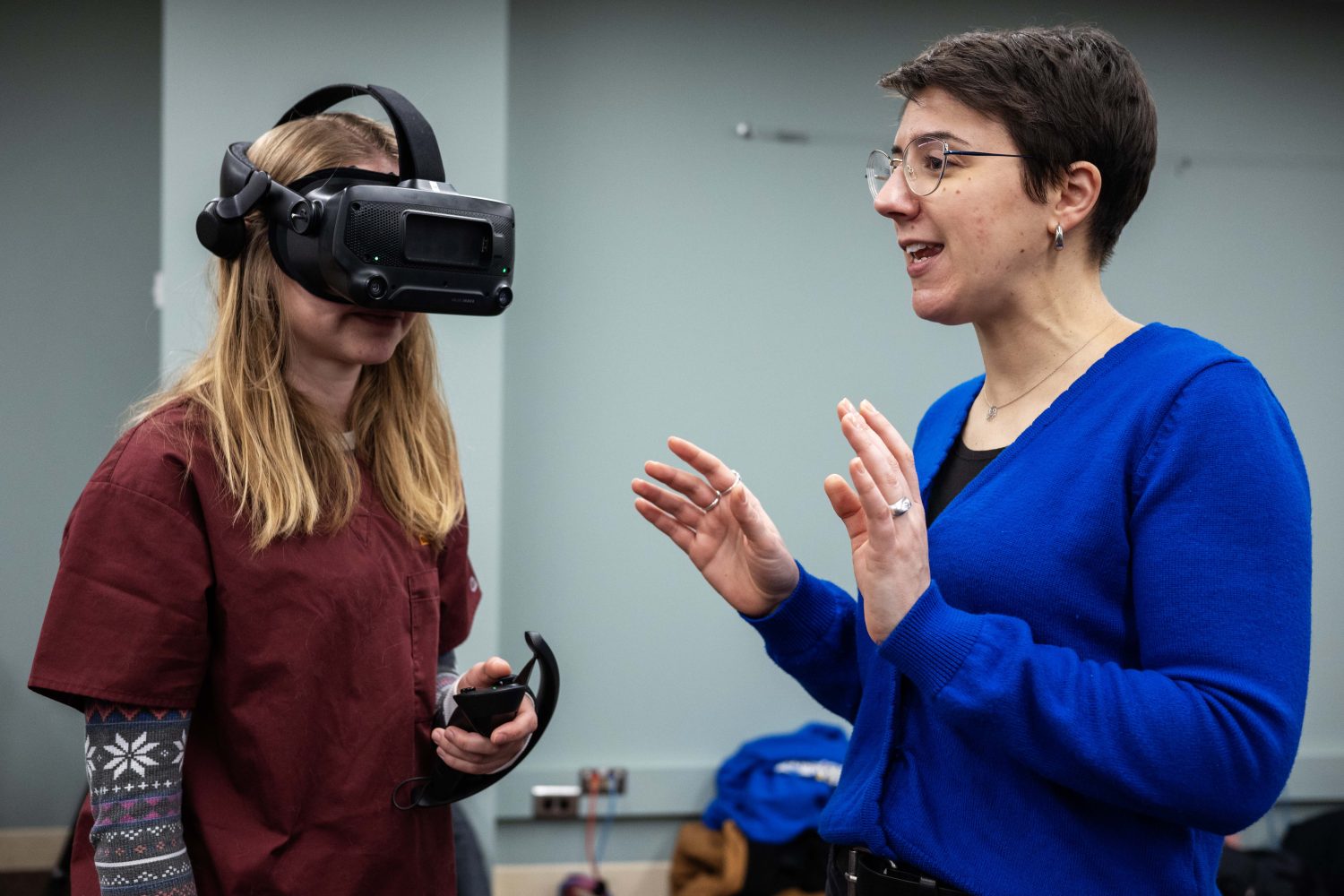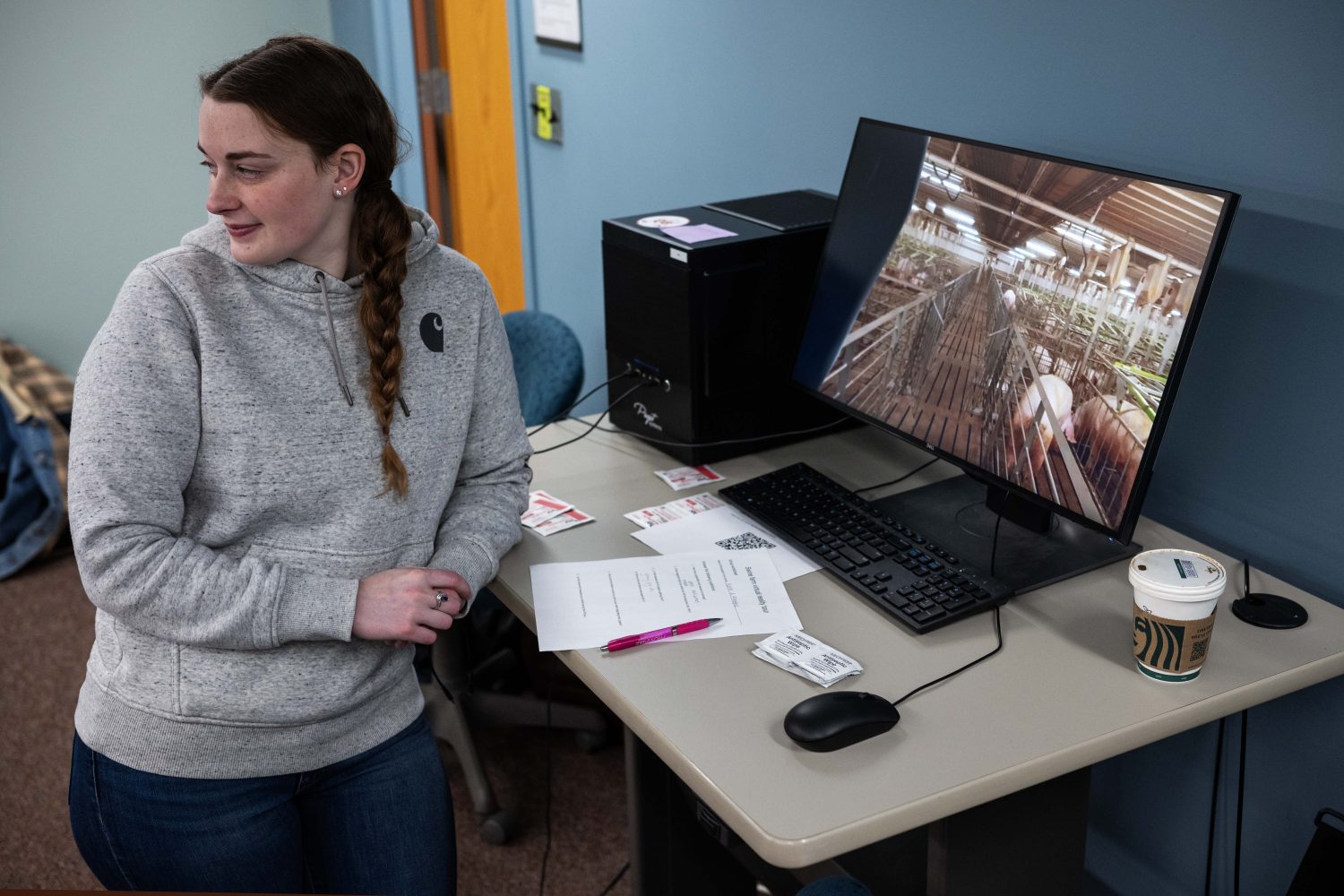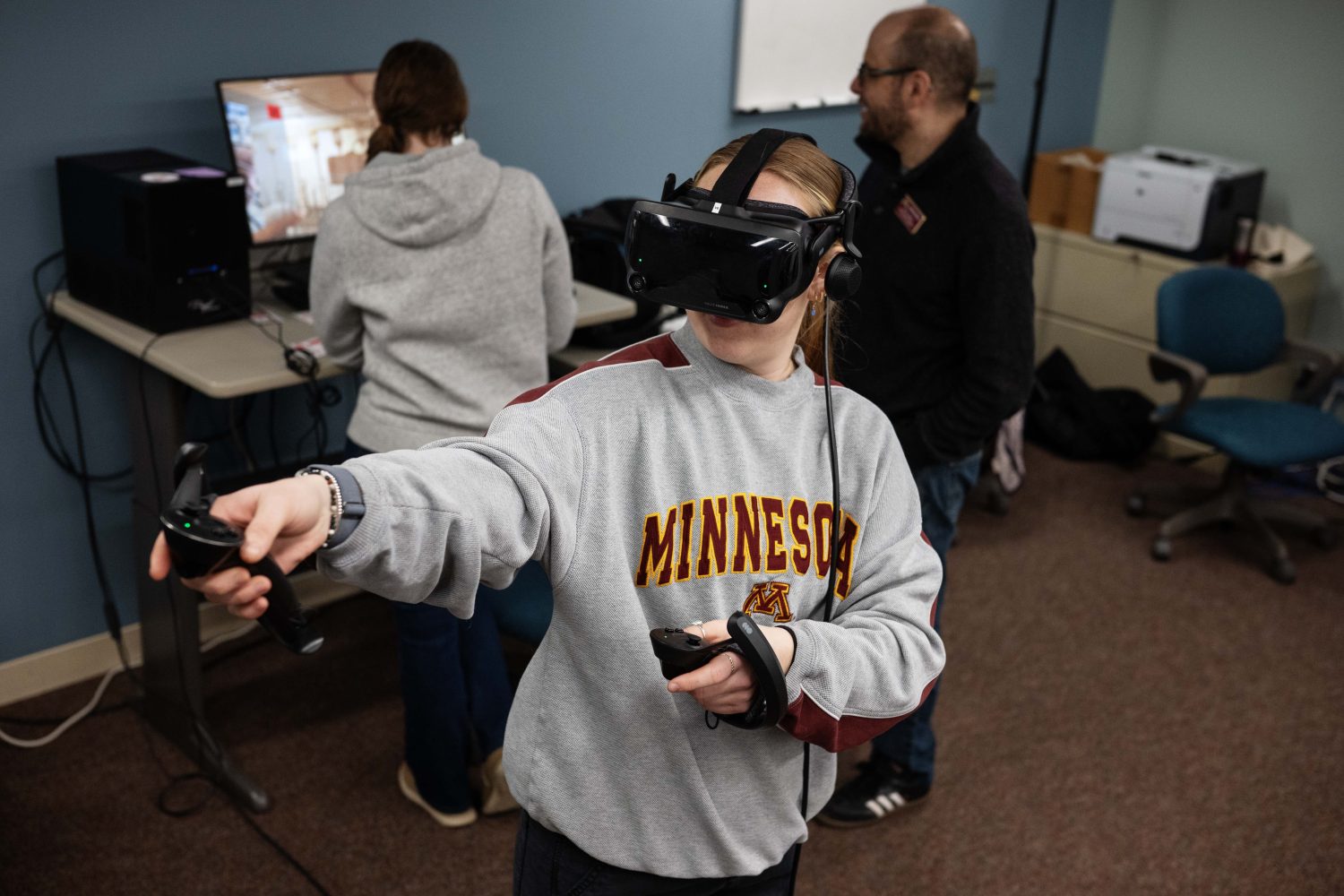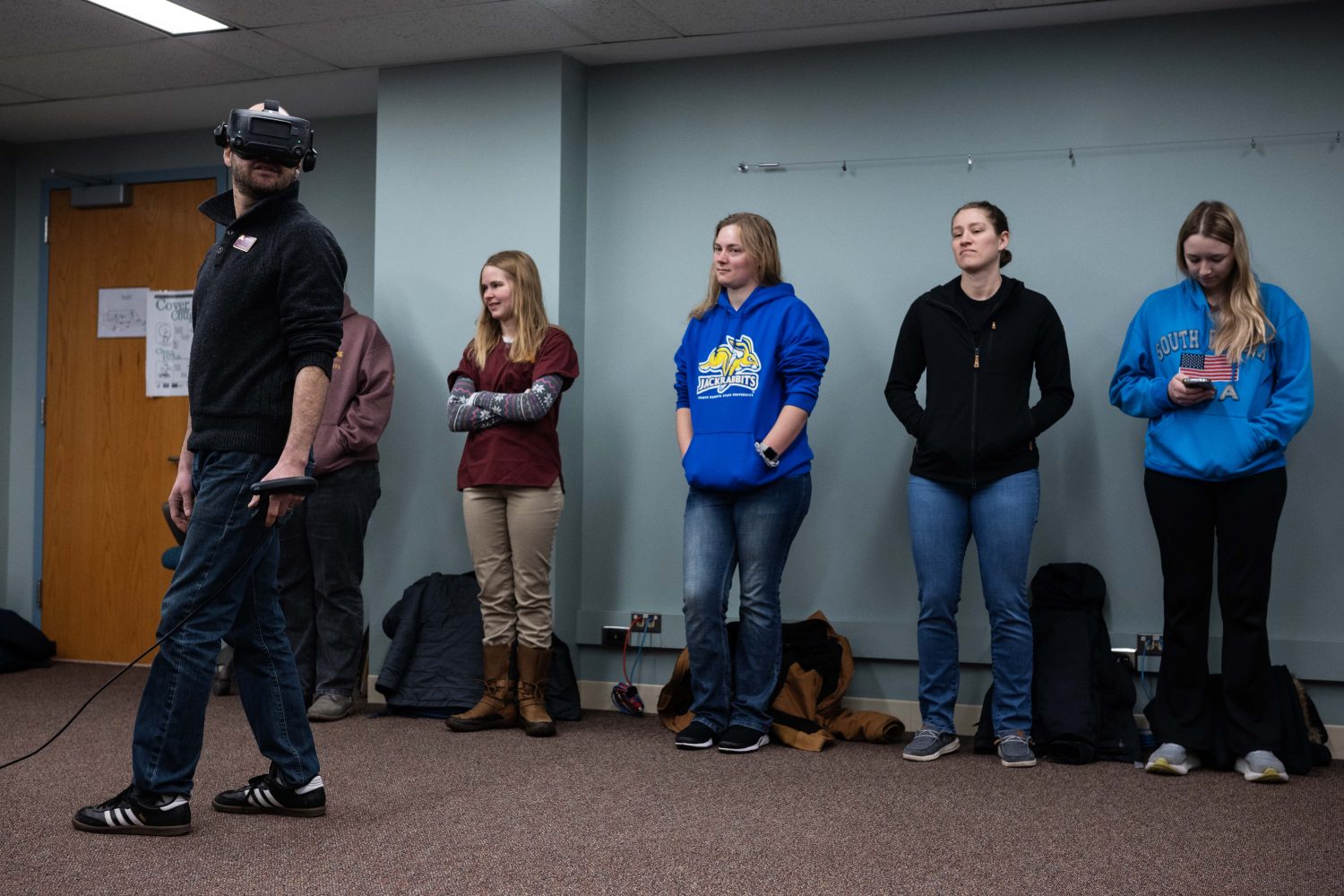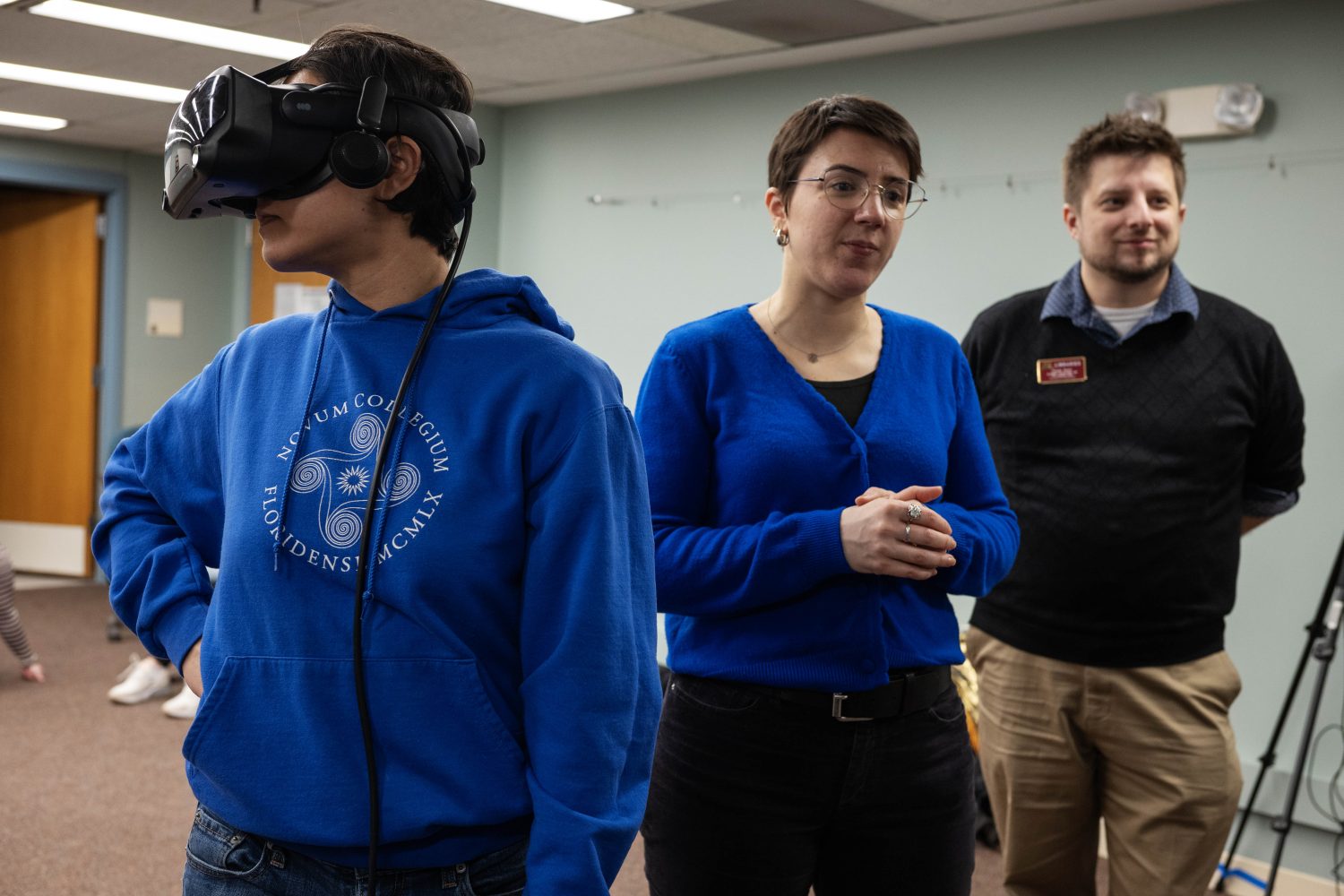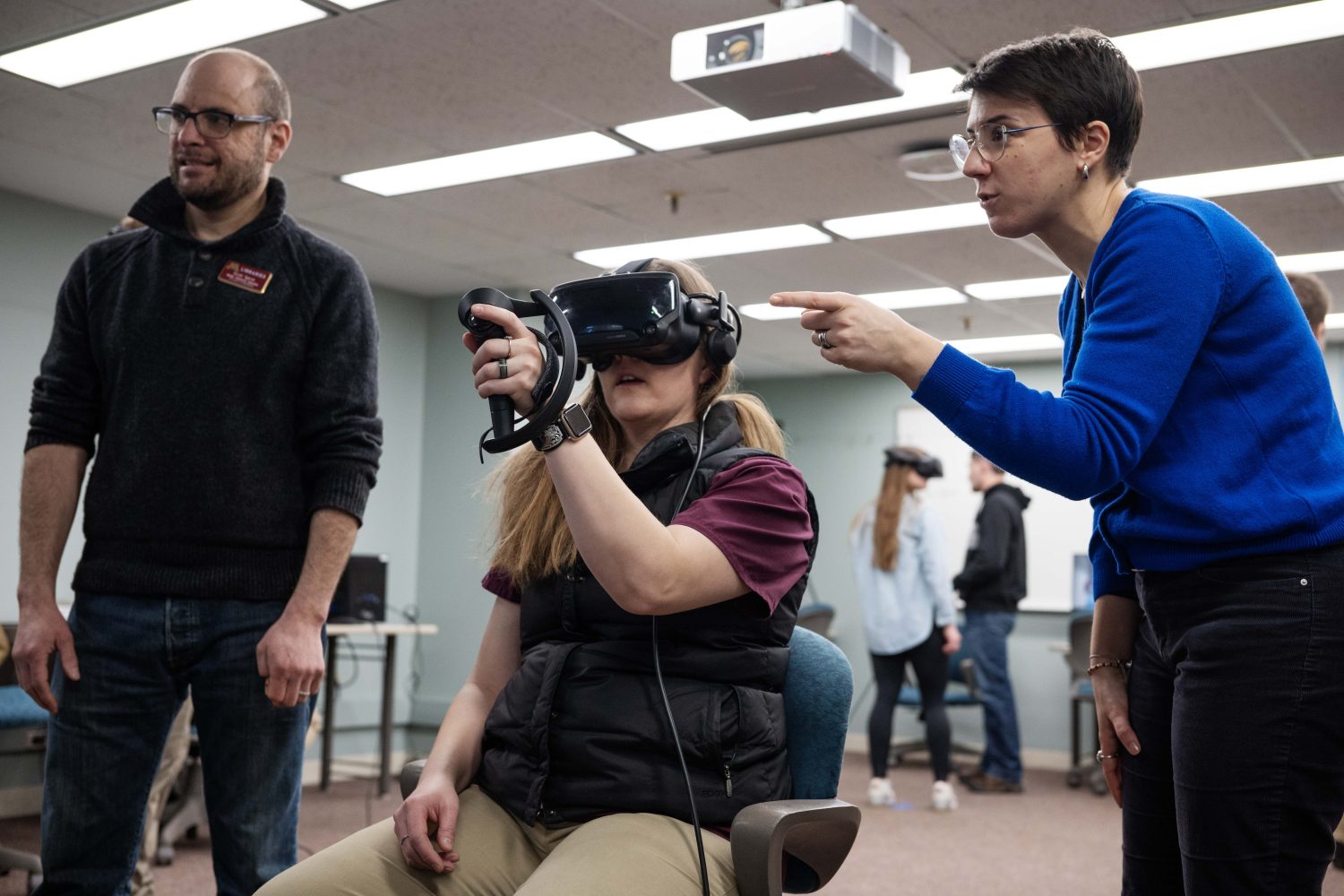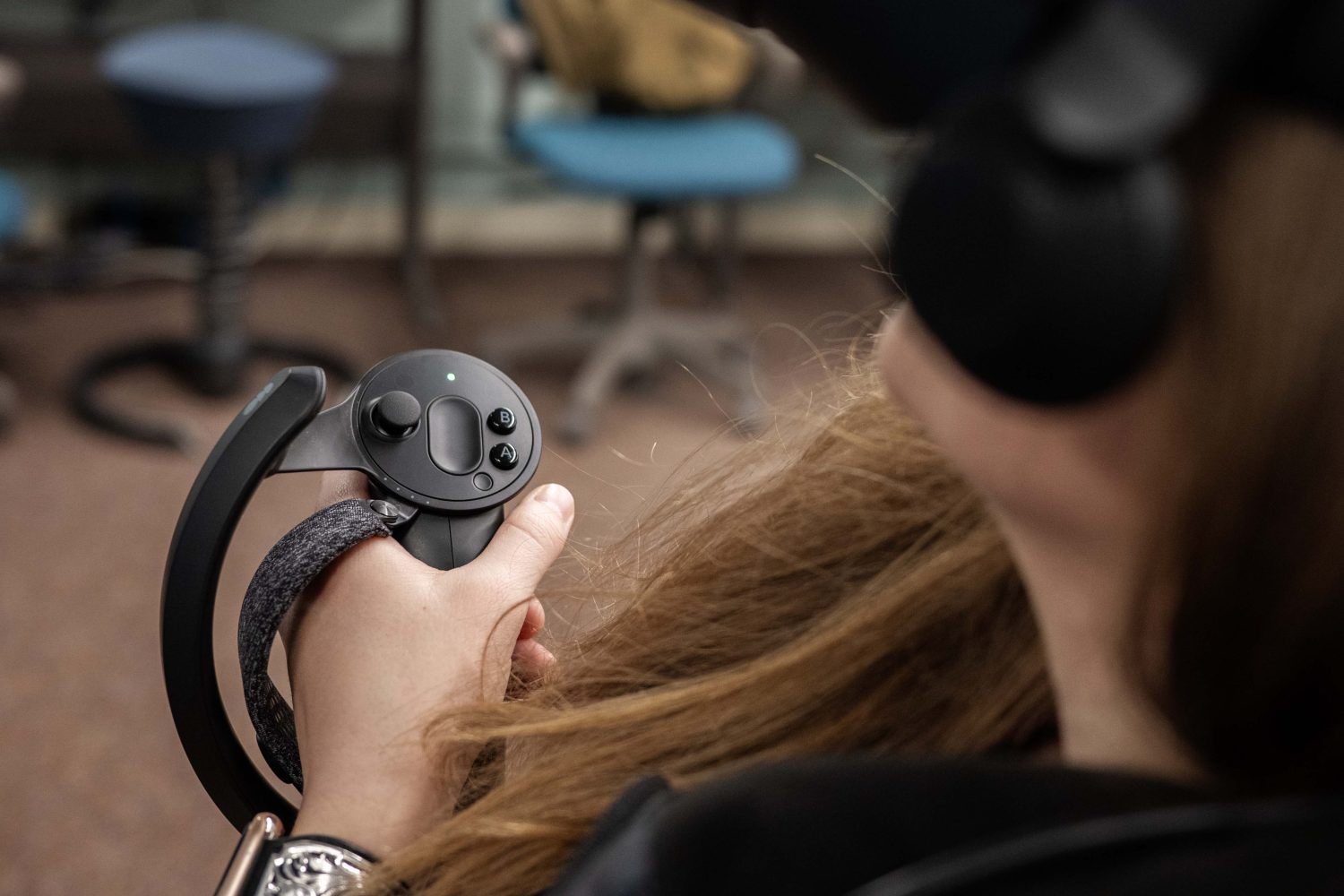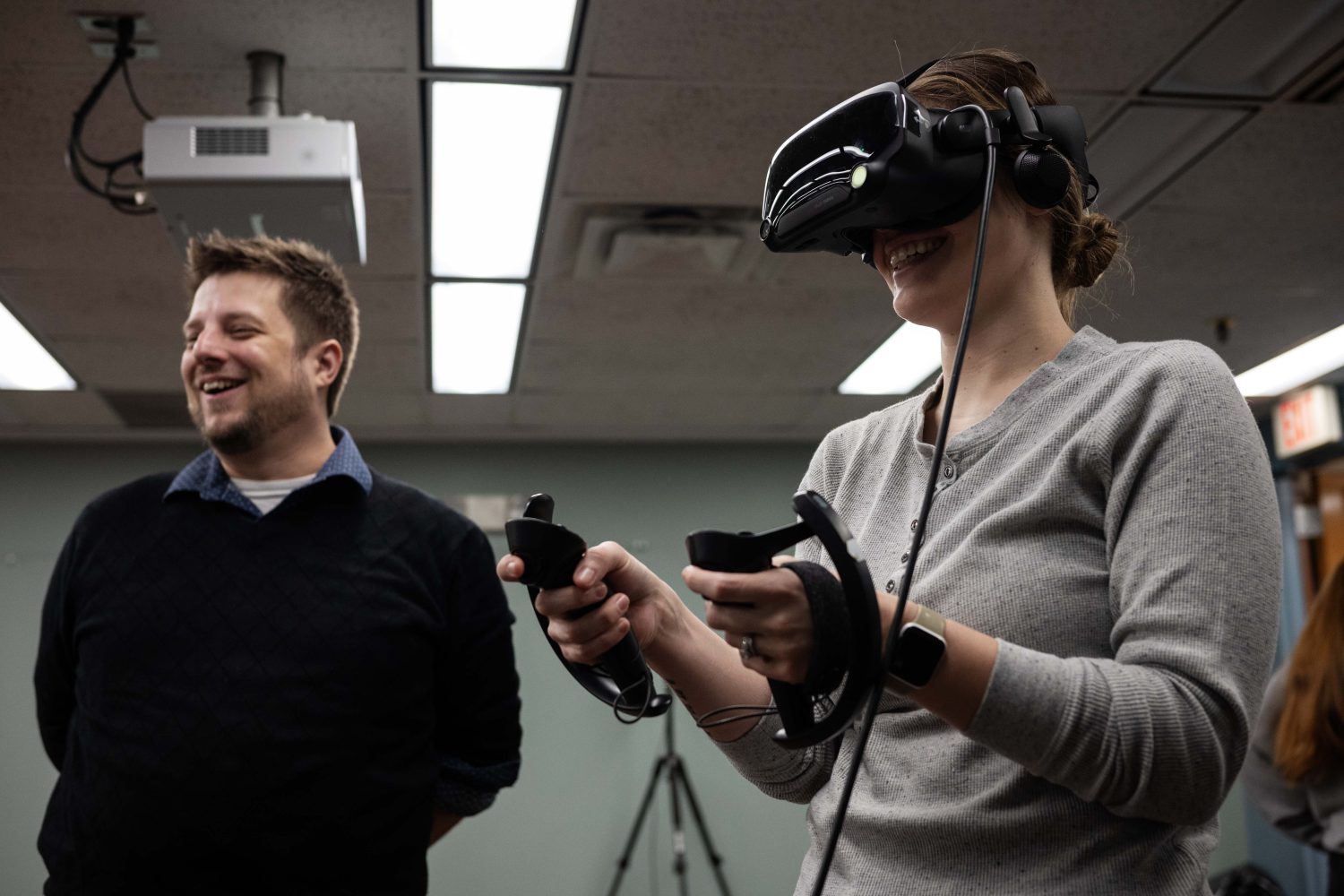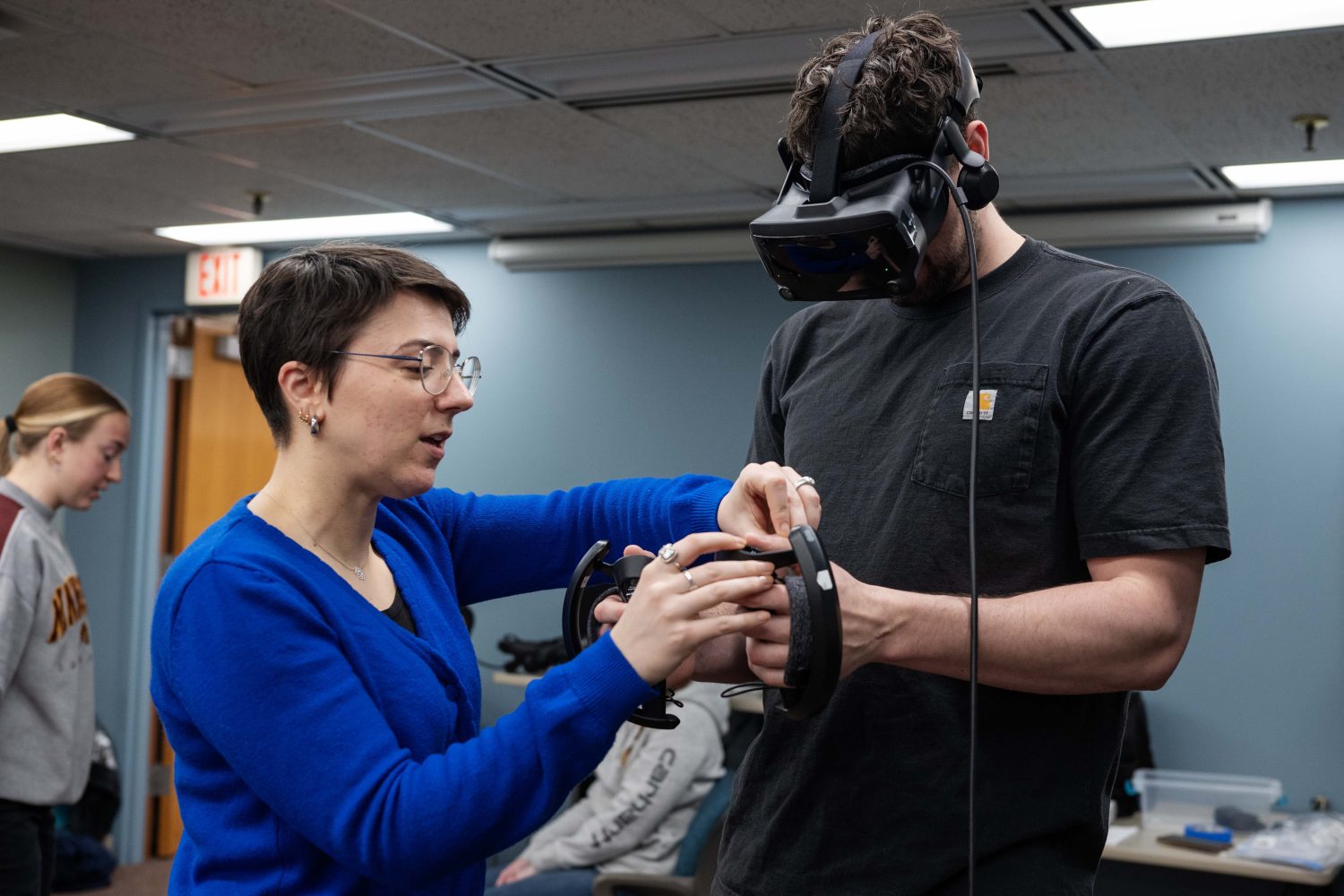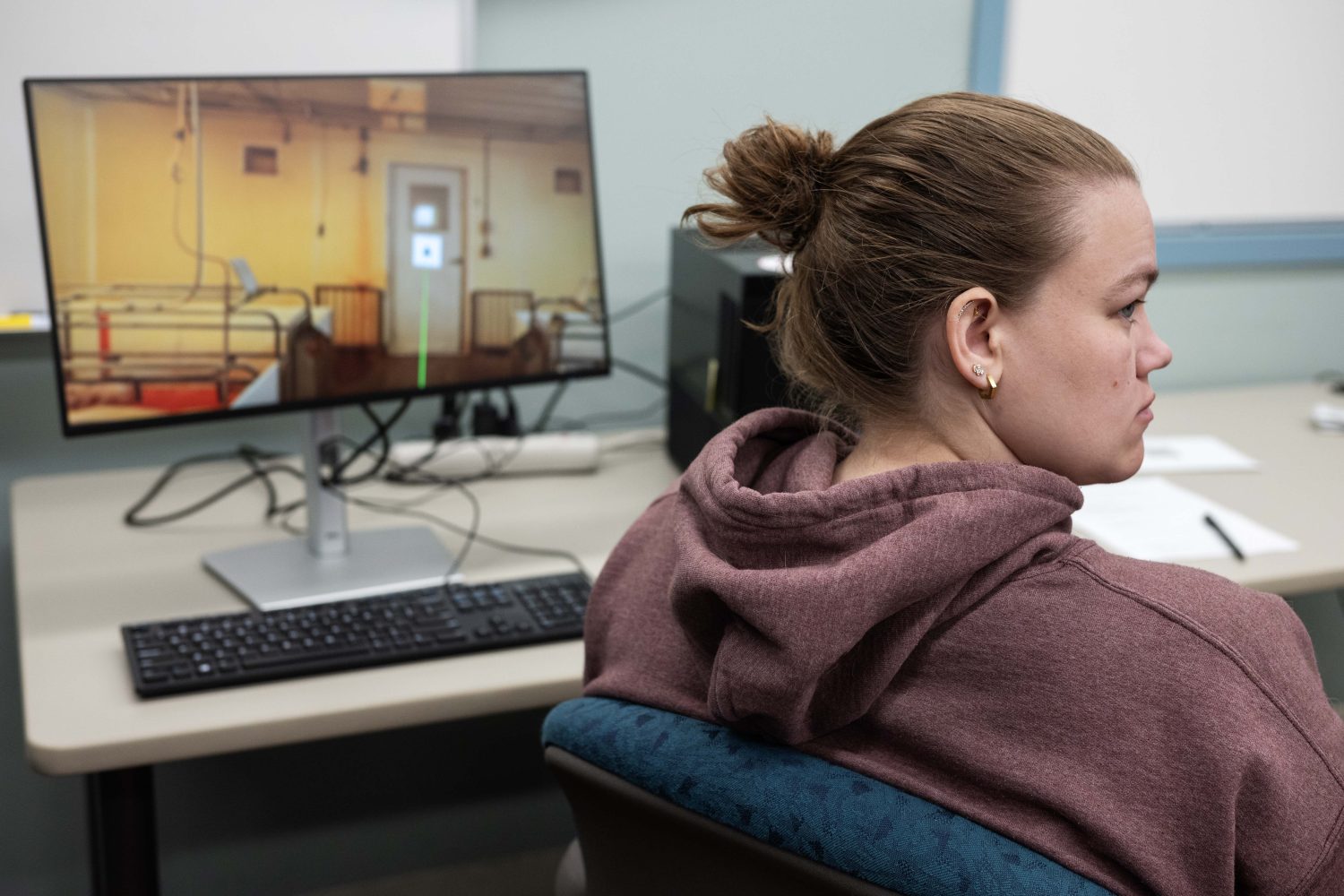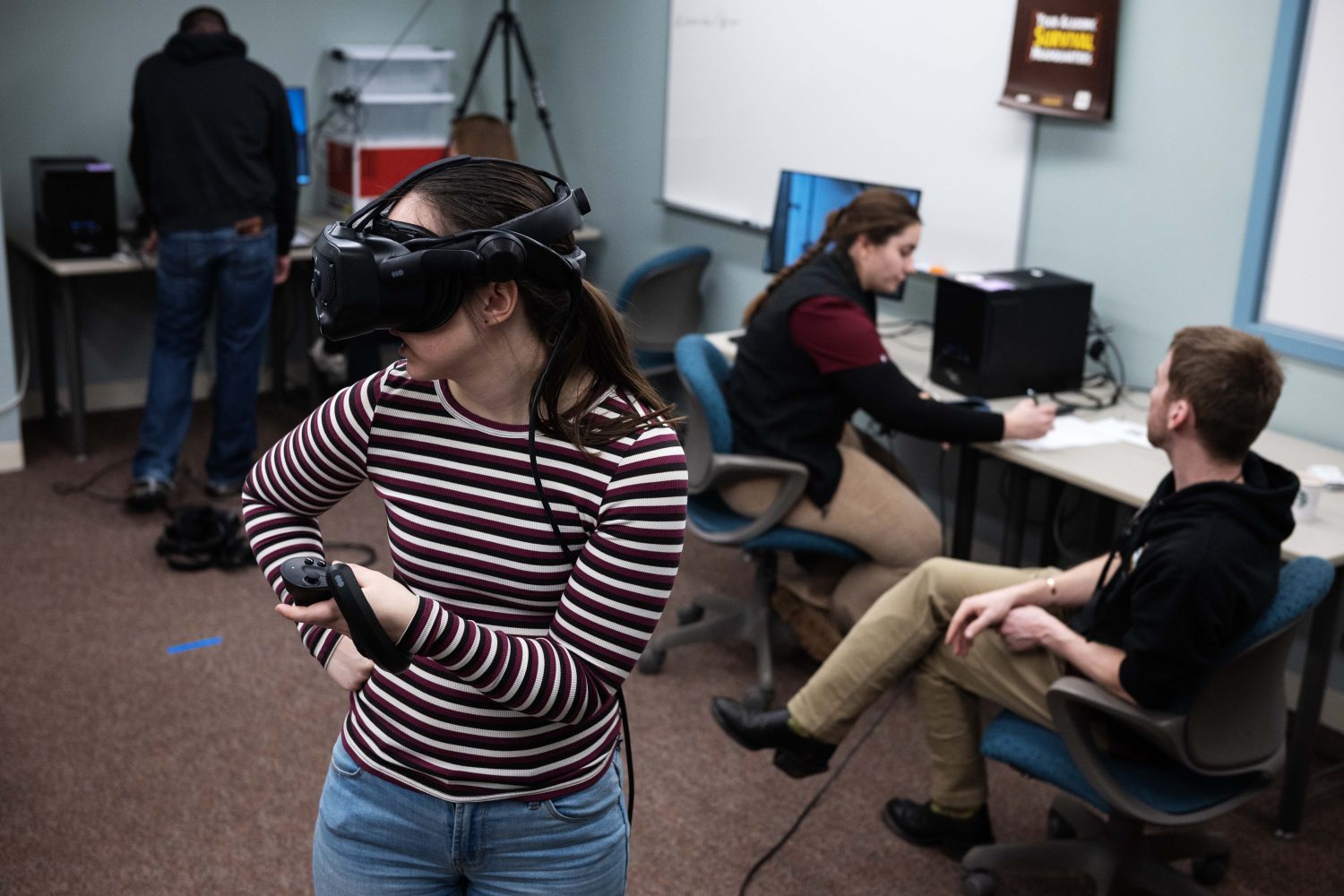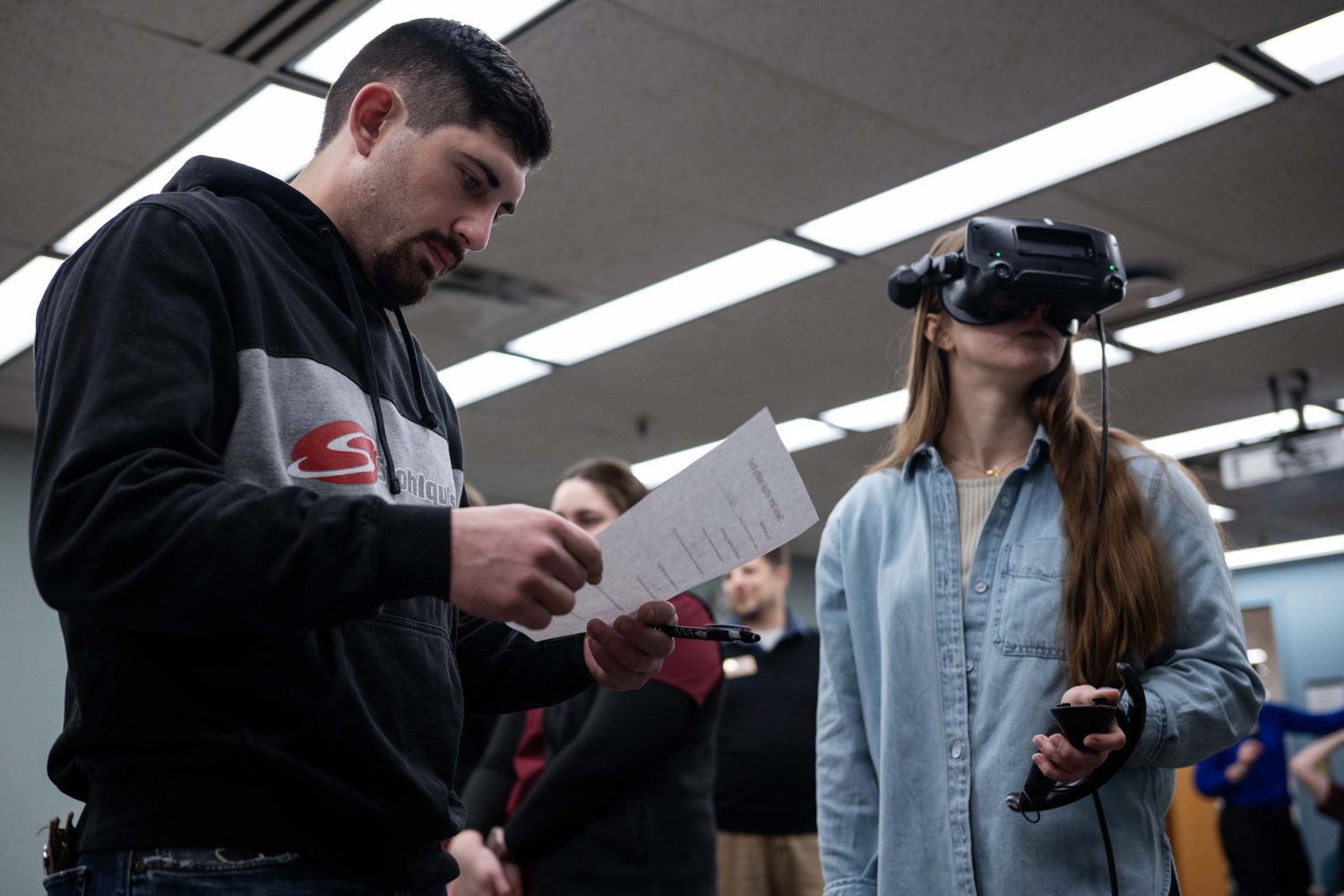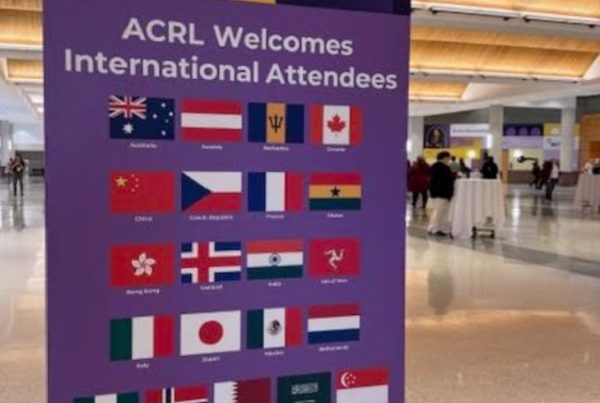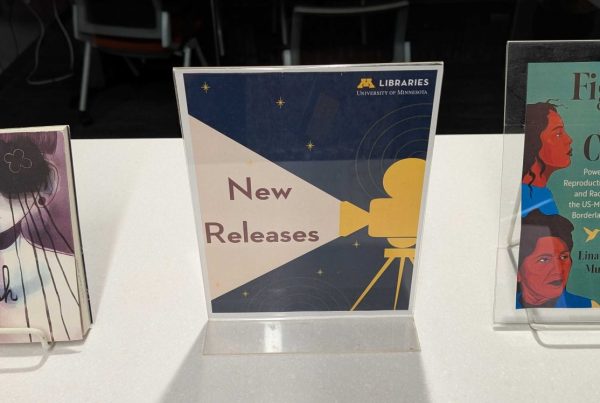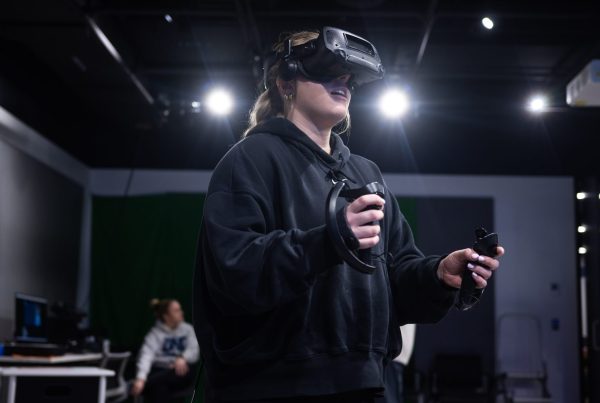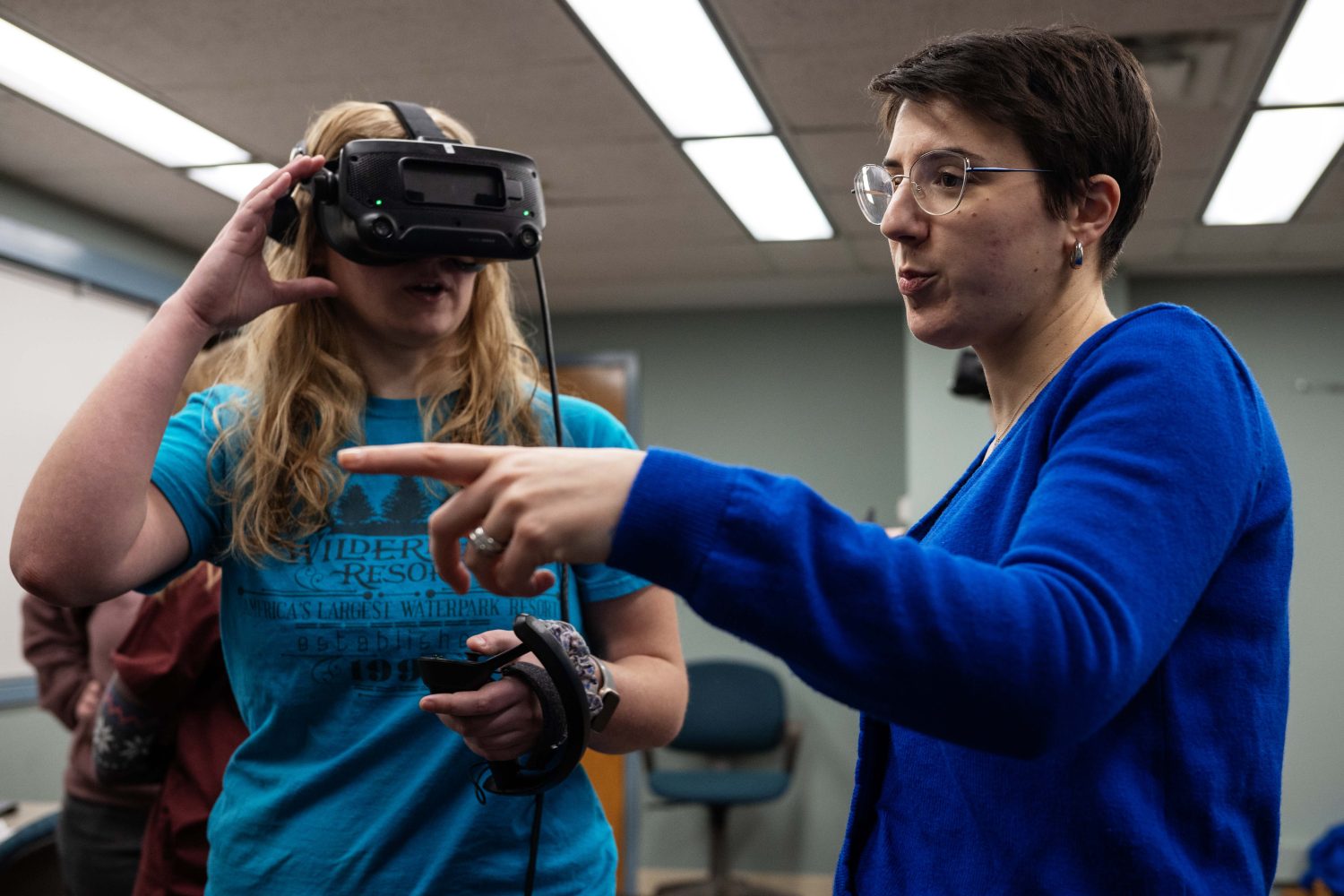
Dr. Perle Zhitnitskiy talks her students through the VR experience of the swine farm, on Thursday, March 6, 2025, in Magrath Library. (Photo/Adria Carpenter)
In Minnesota, pigs almost outnumber people 2-to-1. With over 3,000 pig farms throughout the state, Minnesota raises more pigs than any other state in the country, except Iowa.
But at the University of Minnesota’s College of Veterinary Medicine, few veterinary students have ever seen a pig farm, which might make it difficult to identify how common diseases affect and spread through the swine population.
Dr. Perle Zhitnitskiy, an associate professor in the Department of Veterinary Population Medicine, has been teaching swine health and production for the past 13 years.
She can walk her students through the different sections of a sow farm – the breeding, gestation, and farrowing areas – but taking 40 students on a field trip is “logistically complicated.”
Instead, Zhitnitskiy partnered with the U of M Libraries to develop a 360 virtual reality experience, where students can virtually tour a simulated sow farm, based on real-life facilities, like the Southern Research and Outreach Center’s swine farm in Waseca, Minnesota.
“This will allow students to move around a farm without leaving the classroom,” Zhitnitskiy said.
- Dr. Perle Zhitnitskiy talks her students through the VR experience of the swine farm, on Thursday, March 6, 2025, in Magrath Library. (Photo/Adria Carpenter)
- Veterinary students experience the 360 virtual reality tour of a swine farm, on Thursday, March 6, 2025, in Magrath Library. (Photo/Adria Carpenter)
- Veterinary students experience the 360 virtual reality tour of a swine farm, on Thursday, March 6, 2025, in Magrath Library. (Photo/Adria Carpenter)
- Media Outreach Librarian Scott Spicer shows veterinary students how to use the virtual reality headsets, on Thursday, March 6, 2025, in Magrath Library. (Photo/Adria Carpenter)
Starting outside the farm, students head into the showers before walking through areas like the farrowing room, used for the birth and care of piglets, or the gestation area where pregnant sows rest. Along the way, students are quizzed about the various spaces found throughout the swine farm, how to follow biosecurity protocols to protect animal health, and how to identify common diseases, like greasy pig disease, a bacterial skin infection.
Ana Ruiz, a third-year veterinary medicine student, grew up on a dairy farm in South Dakota. After graduation she wants to go into mixed-practice, working with a variety of species, from cats and dogs, to horses and cattle. The VR program helped her really understand the production side of animal care.
“We were able to ask questions about their living conditions and better understand how to evaluate their welfare,” Ruiz said. “It really helped us get inside there. And then that provokes us to ask more questions to learn more … And it helps us dig into things we’ve already learned.”
Veterinary medicine students don’t have many chances to visit various animal farms prior to their senior year. Isabella Michal, a second lieutenant commissioned with the U.S. Army Veterinary Corps, felt like she missed out on seeing and interacting with pigs, until she put on the VR headset.
“Getting to do this experience was awesome,” Michal said. “I really loved the recording because you could watch the animals move around, like their mentation, their gait … I thought that was very valuable, just being able to watch them.”
- Isabella Michal, Dr. Perle Zhitnitskiy, and VR Program Lead Charlie Heinz experience the VR swine farm, on Thursday, March 6, 2025, in Magrath Library. (Photo/Adria Carpenter)
- Isabella Michal experiences the VR swine farm, on Thursday, March 6, 2025, in Magrath Library. (Photo/Adria Carpenter)
- Dr. Perle Zhitnitskiy and Media Outreach Librarian Scott Spicer talks Ana Ruiz through the VR experience of the swine farm, on Thursday, March 6, 2025, in Magrath Library. (Photo/Adria Carpenter)
- Ana Ruiz walks through the VR experience of a swine farm, on Thursday, March 6, 2025, in Magrath Library. (Photo/Adria Carpenter)
This VR program is the first of its kind, developed over the course of a year. Two students worked on the project, programming and coding the VR experience, collecting video and creating knowledge checks, and piloting the program.
VR Program Lead Charlie Heinz and Media Outreach Librarian Scott Spicer trained Zhitnitskiy on how to use the Libraries’ 360 camera for capturing photos and videos of the farms, helped set up the experience for the class period, and worked with the students, troubleshooting any issues that arose.
“The collaboration with the Libraries was great! Charlie Heinz and Scott Spicer have been there pretty much since the beginning,” Zhitnitskiy said.
And all the effort paid off. Class representatives told Zhitnitskiy that they “really enjoyed it.” For Kendall Blanchard, who wants to work with horses and small animals after graduation, VR is something she wants to return to.
“It was a good way to actually see the setup for a sow farm, especially for someone who’s never been to a sow farm.”
- VR Program Lead Charlie Heinz shows Kendall Blanchard how to use the virtual reality headsets, on Thursday, March 6, 2025, in Magrath Library. (Photo/Adria Carpenter)
- Dr. Perle Zhitnitskiy helps a student set up the VR equipment, on Thursday, March 6, 2025, in Magrath Library. (Photo/Adria Carpenter)
- Veterinary students experience the 360 virtual reality tour of a swine farm, on Thursday, March 6, 2025, in Magrath Library. (Photo/Adria Carpenter)
- Veterinary students experience the 360 virtual reality tour of a swine farm, on Thursday, March 6, 2025, in Magrath Library. (Photo/Adria Carpenter)
- Veterinary students answer questions about the swine farm, on Thursday, March 6, 2025, in Magrath Library. (Photo/Adria Carpenter)
- Veterinary students experience the 360 virtual reality tour of a swine farm, on Thursday, March 6, 2025, in Magrath Library. (Photo/Adria Carpenter)


